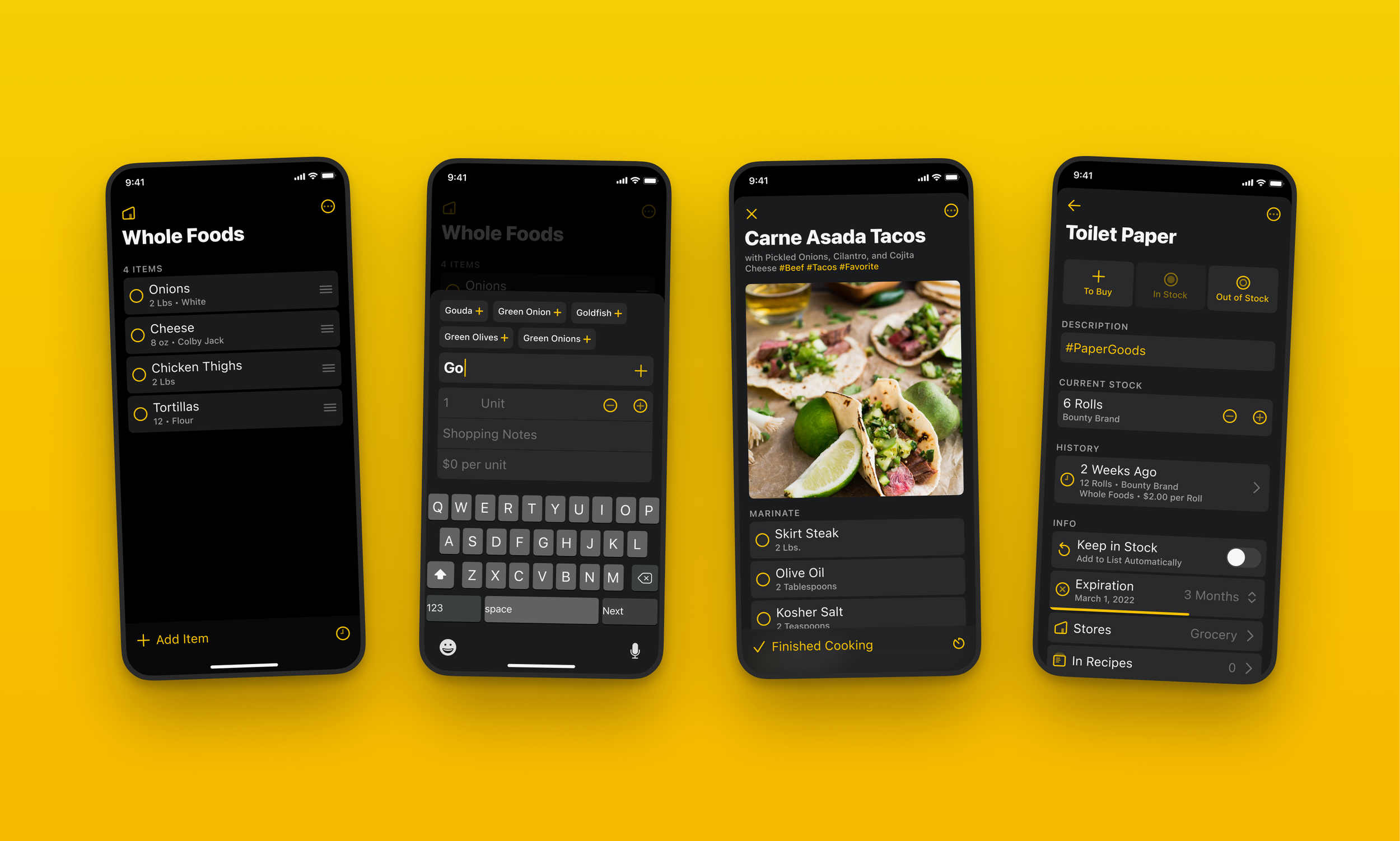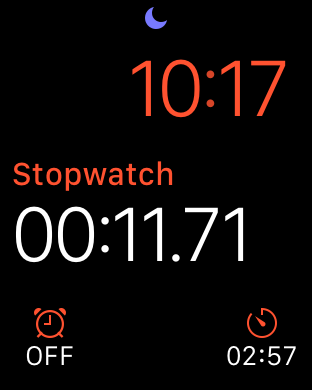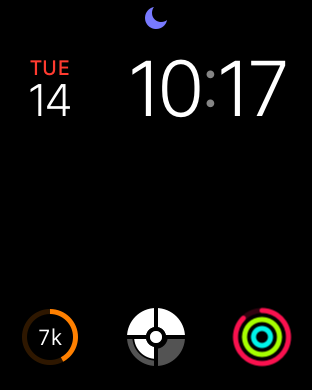May 9th is Grocery's 6th birthday, and there's a lot to celebrate. The app has almost a million downloads and continues to be used by more people year over year. I'm so thankful to everyone who has tried the app and taken it shopping. Grocery has surpassed all of my original expectations and continues to be the project that I am the most proud of.
Usually a Grocery blog post would be all about a new update I'm shipping to make the app better, but not this time. I am actually working on several updates to Grocery, so keep a look out for those coming soon. But I wanted to take some time to reflect on a different kind of story about the updates I haven't shipped, and why that’s been especially challenging for me as a solo app developer.
On January 16th I underwent a spine surgery procedure known as an Anterior Lumbar Interbody Fusion (ALIF). If that sounds familiar, it’s the same surgery that Tiger Woods had a few years before his most recent victory at The Masters. I underwent the surgery as the last resort to try and resolve chronic low back pain that I’ve been dealing with for many years.
Dealing with chronic pain is extremely challenging and confusing. I really didn’t know what to do when my lower back started to hurt five years ago. I tried stretching, yoga, and physical therapy. I tried improving my posture. I tried a standing desk. Back pain is extremely common but it’s usually mercifully temporary. But in my case it just got progressively worse until it was too painful to sit in any kind of chair for more than an hour.
I wish I knew what the cause was. There’s no specific injuring moment I can point to that caused my pain to start. When a runner tears their ACL there's no mystery involved. They feel the exact moment that the injury occurs, and there’s a clear path to follow immediately afterwards to resolve the issue. But you don’t expect to tear your ACL sitting at your desk, and I certainly couldn’t imagine doing anything to injure my back severely enough that I couldn’t sit anymore.
As it turns out though, my back was injured. The lowest lumbar disc was essentially gone, and two of my vertebrae were no-longer aligned. That caused my spine to be unstable and arthritis was setting in. That’s not a great situation to be in for anyone, and it was rendering all of my other efforts to relieve the pain moot.
I figured all of this out last year, when the chronic pain became effectively permanent. Sitting at my desk for more than an hour was extremely uncomfortable, which was starting to make things harder for me at work, and was impacting the time I could spend working on Grocery too.
It’s safe to say that my pain was affecting nearly all aspects of my life, but where I felt the loss most acutely was in my work. Even the temporary loss of something that has become your life is tough to deal with. I know that for athletes who are injured, their sport and their training are what they miss the most. For me as a software engineer who is injured, I know that sitting and feeling productive writing code is what I miss the most too.
Back pain and spine surgery can affect anyone in any field, but I haven't seen many people talk about what it's like to deal with as a solo app developer. I could write a book about how back pain has affected other aspects of my life that nearly anyone could relate to. But I think Grocery is the most interesting part of my recovery journey because it’s something that I can’t step away from; when I do step away from Grocery there’s no one else who can step in.
There’s a lot of great things about being the solo developer of an indie app. You are in the ultimate position of flexibility. You get to build exactly the app you want, with exactly the technology you love, on whatever schedule you choose. You get to wear all the hats, write every line of code, and enjoy all of the satisfaction knowing that people love using the thing that YOU made!
But there are some less great things about being a solo developer too, and a big one is that when you’re injured, having major surgery, and recovering from surgery, no one else is developing your app for you. I think that it’s pretty common for solo indie developers to take breaks from writing code - no one should be writing code nonstop all of the time anyways. But I think that those breaks are usually because it’s just time to do something else for a while, not because of an injury that forces you to step away entirely.
When my back started to get pretty bad last year I was in the middle of Grocery’s biggest release ever: 3.0. I think it’s worth celebrating that I actually did ship such a major release for Grocery while dealing with all of this, because it wasn’t easy. A lot of my time working on the app was done laying down on the couch or sitting in a chair with an ice pack to reduce the pain in my back. I was motivated to finish the work though because this release was a big deal. The complete design overhaul and new features really felt like they put the app in a great place. Seeing that work taking shape gave me the motivation to push through the pain and get it done.
One of the key features of 3.0 that I added at the very end was a completely re-written User Guide. Looking back, I think that was the most important feature of the release, and going forward will continue to be a major area that I invest time in. While I was working on 3.0 I spent a lot of time fixing bugs that users had reported, and trying to resolve confusing user experience issues that I heard about in emails. I tried to capture anything that I thought users would need to know about the app in the user guide so that people would have a place to go to look for answers if I couldn’t respond to support email.
That would prove to be prophetic, because it’s been very difficult for me to respond to support email during my surgery recovery period. The way that I usually handle support email for Grocery is that I’ll take a Saturday or Sunday here and there to respond to everything I’ve received in the last few weeks. That takes a few hours though and I just couldn’t spend that kind of time in front of a computer after my surgery. As a result, my support responses have been much slower and I know there are questions that my users are waiting for answers on. But because I spent time filling out the user guide, I know that there is at least a place for users to find answers to most of what they should need to be able to use the app. It’s not a replacement for responding to support email, but at least email isn’t the only avenue for users to get answers.
If I had to do this whole surgery thing over again though, I would probably look into hiring someone to help part time with support. It’s a tricky problem because some support requires code level knowledge that another person wouldn’t have. But it would be better than not being able to do anything myself, which is where I was after surgery for several months.
Throughout this period I’ve had to remind myself that the reason normal people are using an app is for what the app does right now. People aren’t looking at my roadmap and deciding if they should use Grocery based on that. I feel extremely thankful that the app was in a pretty good spot before I went under the knife, but that doesn’t stop me from feeling guilty and sad that I’ve made no progress on the improvements and new features I want to work on.
There’s a physical side of combating any injury and there’s also a mental side. They are equally important and in a lot of ways the mental part is the toughest to handle. When I’m sad about the lack of progress that I’ve made on Grocery during this period I’ve found it helps me to focus on _why_ I am doing this. Why am I working on this app in the first place and what am I hoping to get out of it?
I recently read a support email from a husband and wife that love using the app to shop. I recently used the app myself to plan and cook a whole meal of enchiladas from scratch for my partner and family (the first time I’ve done that since before surgery). The love for Grocery is still there because I know it has a place in my life and the lives of many others.
Recovering from an injury requires a singular focus on getting better. A dear friend has been helping me focus on each of the incremental milestones I achieve during recovery. The first time I walked around the block, made my own meals, drove a car, went to a restaurant, watched a movie out of bed, played a computer game, and went back to work. We call them medals. I didn’t earn very many during those first few weeks but over three months later and I’m earning a few every week. Progress is definitely happening and it’s critical to celebrate it.
I’m nearly back to where I was before surgery, and I have a lot of recovery left to focus on to get my back to where it needs to be. I think I’m also nearly ready to focus just a little more on the work that I would like to get back to with Grocery. I think that earning a few Grocery medals might just give me some of the motivation I need to prepare my mind for working on the app regularly once my body is ready to do so.
I’ve always liked to start small when I’m trying to get back into the swing of anything, so I figured my first step coming back should be something simple like fixing a bug. Thankfully, I just checked that one off. Two minor issues were reported via email, and both turned out to be very easy fixes. Medals awarded! First Grocery code changes, bugs fixed, and support emails responded to since Surgery 💪.
I’m hoping to continue checking off a few more smaller medals while working towards some larger ones: clearing out my support queue (earned 🥇), adding a small requested feature (earned 🥇) and shipping my first bug fix update after surgery (coming soon 🏆). I don’t have a timeline for the release but I know that I’ll feel really good about completing it when I do.
I’ll be looking for other ways to build excitement and motivation along the way. The biggest excitement booster I can think of has always been WWDC in June, and I won the ticket lottery so I'll be there in person. If you're a developer reading this and you'll be in town, reach out! I would love to say hi. I've always come home full of excitement after WWDC and I think it'll be just what I need this year too.
This injury, surgery, and recovery is up there with any major challenge I’ve faced in my life. This experience has been a great reminder that there are some things you just can’t do alone. I know that I have benefited greatly from the love and support of my family and friends, and honestly don’t think that I could have recovered without them. I’ve needed to be realistic with myself that I can’t do all of the things I would like to, yet determined to progress back to a place where I can do those things eventually.
That I think is the key for solo developers in a situation like this. Be patient with yourself and deal with what life is throwing at you, while persistently knowing that your app will be there for you when you’re ready.







































